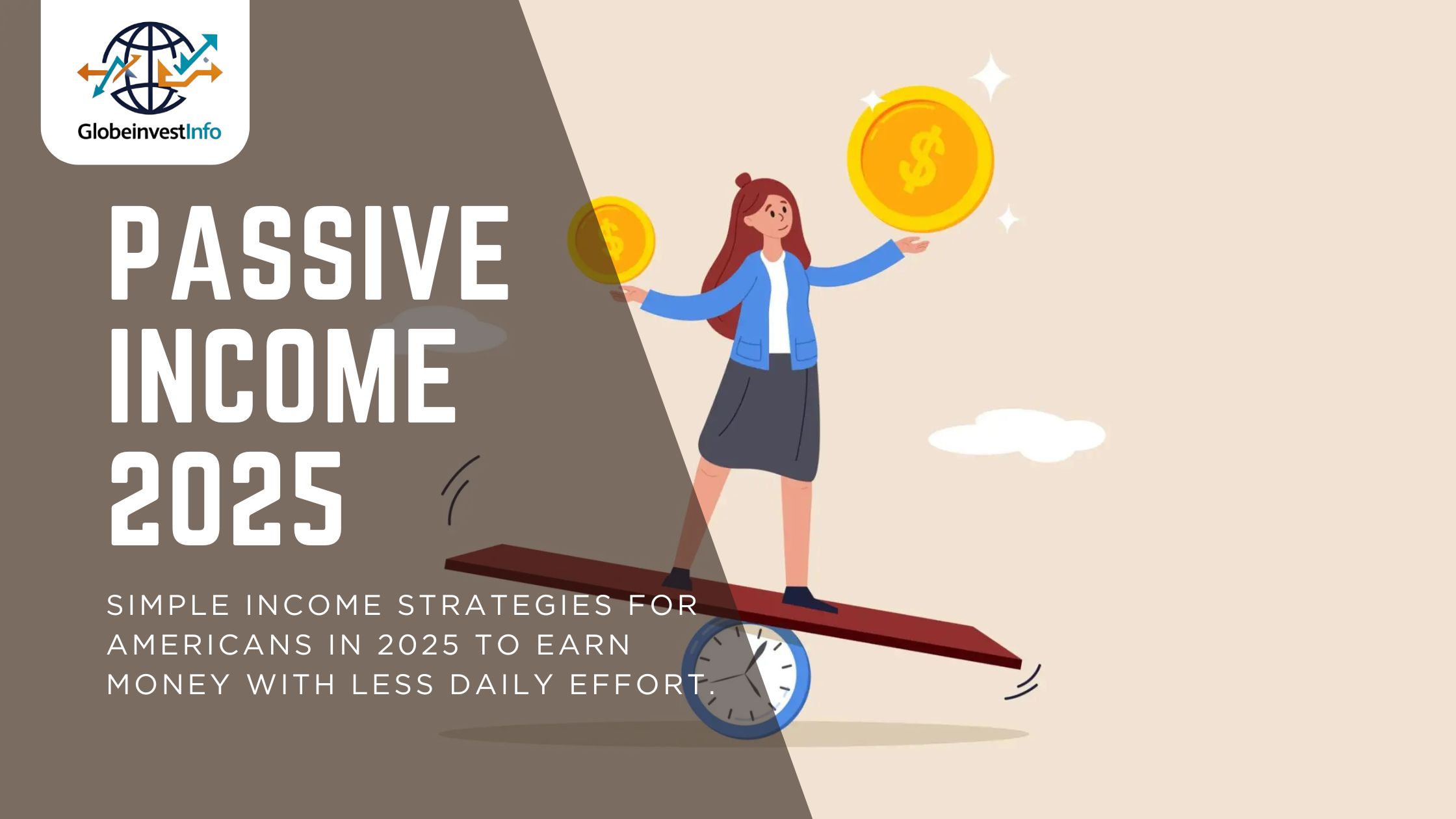Many Americans want to boost their earnings without trading more hours at work. It can feel frustrating when your paycheck covers the basics but leaves little room for savings or enjoying life. The rising cost of housing, food, and healthcare makes it harder to save for the future. At the same time, people worry about retirement planning and whether their nest egg will be enough.
That’s where passive income comes in. The idea is simple: set up systems that earn money with little daily involvement. Unlike side hustles that demand time, passive income relies on investments, assets, or content you create once and keep benefiting from. This article is written for Americans in 2025 who want practical, realistic, and modern strategies for building passive income streams. You’ll find clear steps, examples, and even a pros and cons table to help you choose the right path.
Quick Read
- Smart passive income methods for Americans in 2025
- Options ranging from investments to digital products
- Tables to show expense needs and income examples
- Pros and cons of the most common strategies
- FAQs on passive income and retirement
Understanding Retirement Planning
Retirement planning is more than just putting money into a 401(k) or IRA. It’s about making sure you have reliable income streams when you stop working. Passive income plays a central role because it can supplement Social Security and retirement savings. Think of it as building “paychecks” that keep coming whether you’re working or not.
Key Steps in Retirement Planning
Estimating Your Retirement Income Needs
The first step is understanding how much money you’ll need each month. Here’s an example budget for a retired American couple:
| Monthly Expense Category | Estimated Amount (USD) |
|---|---|
| Housing & Utilities | $1,500 |
| Food & Groceries | $500 |
| Healthcare & Insurance | $600 |
| Leisure & Miscellaneous | $400 |
| Total | $3,000 |
This means you’d want passive income streams and retirement savings that can reliably cover at least $3,000 per month—or $36,000 a year.
Projected Expenses in Retirement
- Essentials: housing, food, healthcare, insurance
- Lifestyle: travel, hobbies, entertainment, gifts
- One-time: major medical bills, home repairs, large purchases
Managing Debt Responsibly
Carrying debt into retirement can drain your income. Start by paying off high-interest debt such as credit cards and personal loans. Next, work on student loans or auto loans. Mortgages are often last because interest rates can be lower and the payments may be tax-deductible. By reducing debt, more of your passive income can be used for living rather than paying creditors.
Investment Strategies for Retirement and Passive Income
Diversifying Your Investment Portfolio
Relying on one type of investment is risky. Instead, diversify across stocks, bonds, real estate, and digital income options. Here are a few examples with average returns:
| Strategy | Notes and Yields |
|---|---|
| Dividend-paying stocks / ETFs | Yields 2–6% depending on stock or fund |
| REITs (Real Estate Investment Trusts) | Average yield ~4%, plus long-term growth potential |
| Bonds and Preferred Stocks | Municipal bonds ~3–5%, preferred stocks 5–7% |
| Real Estate Syndication / Private Lending | Can return 10–12% annually, but with higher risk |
This mix gives you both stability and growth potential.
Managing Risk Without Avoiding It
Risk is part of investing. The key is not to avoid it completely but to manage it. For example, a 30-year-old might hold 80% stocks and 20% bonds. By age 60, it could be 50% stocks, 40% bonds, and 10% REITs. Rebalancing once a year helps keep your portfolio aligned with your risk comfort and goals.
Using Systematic Withdrawals
Systematic withdrawals are a simple way to turn savings into income. A common rule is withdrawing 4% of your portfolio annually. For example, if you have $500,000 saved, you could withdraw $20,000 a year. Combined with Social Security and passive income from investments, this helps cover living costs. Always consider taxes when planning withdrawals—Roth IRA distributions are tax-free, while traditional IRAs and 401(k)s are taxable.
Best Passive Income Ideas for Americans in 2025
So what options are popular in 2025? Based on current market conditions and expert advice, here are the top choices:
- Dividend Stocks and ETFs – A time-tested strategy with steady yields. Many companies raise dividends each year.
- REITs (Real Estate Investment Trusts) – A way to earn rental income without managing property. Public REITs trade like stocks.
- High-Yield Savings and Bonds – Safer but lower-return options for people closer to retirement.
- Digital Products – E-books, courses, or templates sold online can create ongoing income with upfront effort.
- Affiliate Marketing – Earning commissions by promoting products online through blogs or social media.
- Real Estate Rentals or Syndications – Direct property rentals or group investments with other investors.
- Private Money Lending – Higher risk but potentially double-digit returns when lending to real estate investors or small businesses.
Pros and Cons of Passive Income
| Pros | Cons |
|---|---|
| Creates multiple income streams | Often needs upfront capital and research |
| Reduces reliance on one job or paycheck | Income can fluctuate year to year |
| Low ongoing time commitment once set up | Market downturns can lower returns |
| Can scale over time with reinvestment | Tax complexity depending on income type |
FAQs
Q1: What is passive income?
Passive income is money earned with little day-to-day effort after the initial setup. Examples include dividends, rental income, or royalties from digital content.
Q2: Can I start passive income with little money?
Yes. Options like affiliate marketing, selling digital products, or fractional investing in ETFs and REITs let you start small. Over time, reinvestment helps grow your earnings.
Q3: Are REITs a reliable income source?
Yes. They typically yield around 4% annually and have historically outperformed the S&P 500 over long periods. They also provide diversification since they invest in real estate rather than traditional stocks.
Conclusion
Building passive income in 2025 is not about chasing overnight success. It’s about setting up income streams that make your financial life easier now and more secure in the future. From dividend stocks to digital products, the opportunities are wide. By combining these ideas with strong retirement planning, you can reduce financial stress and enjoy more freedom.
If you want deeper insights and practical tools, check out our finance blog. You’ll find calculators, guides, and tips to help you launch or expand your passive income journey. And if you’re serious about planning for retirement, talk with a trusted advisor who can tailor strategies to your needs.
Kelsey Johnson is a seasoned business writer specializing in strategy, marketing, and entrepreneurship. Her concise, insightful blogs help professionals drive growth and make smarter business decisions.

